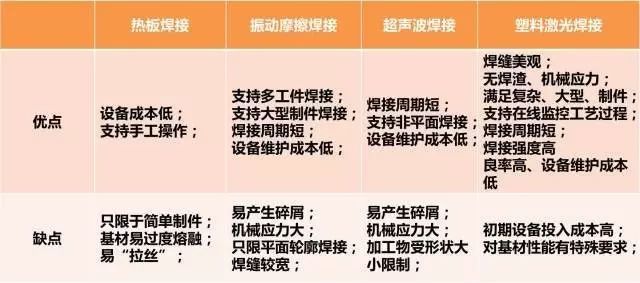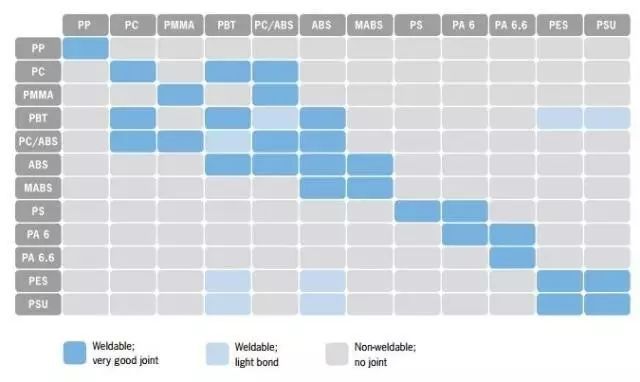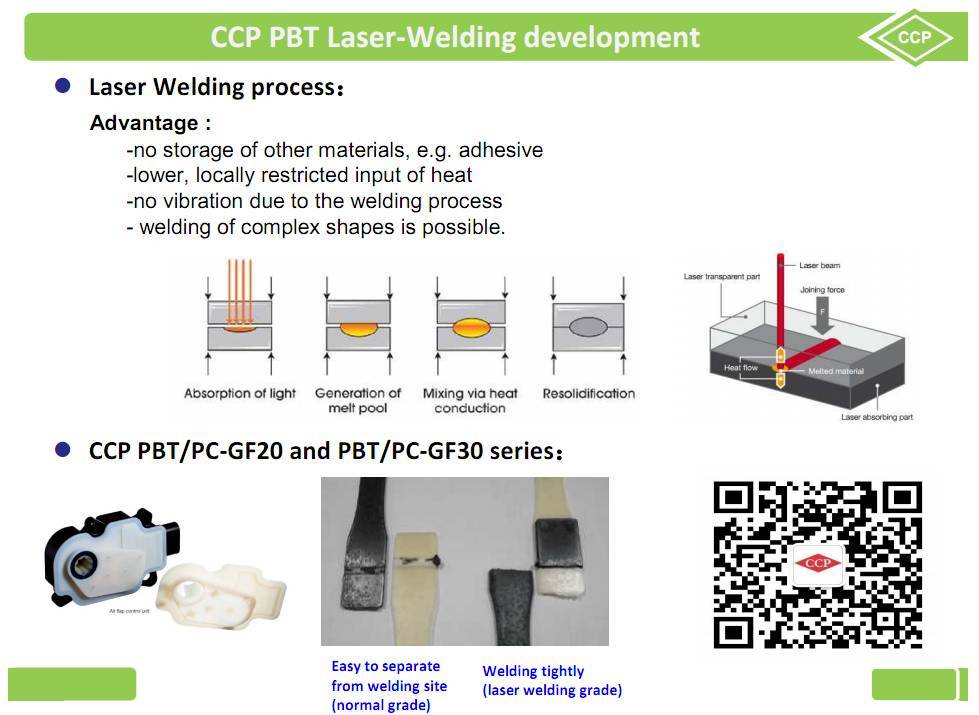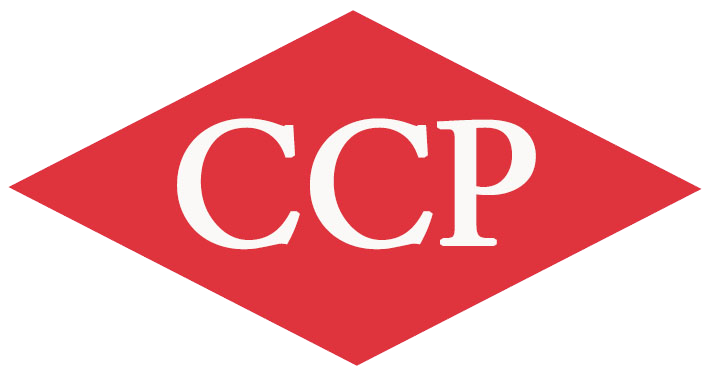Potential stocks in the plastic welding industry - Laser welding is becoming the new trend in plastic welding.
Release time:
2018-03-12
Hot plate welding is one of the earliest developed and simplest welding techniques in plastic welding technology. With the advancement of technology, the most commonly used welding methods now are vibration friction welding and ultrasonic welding. In addition, laser welding technology is also receiving increasing attention.
1
Potential stock in the plastic welding industry - Plastic laser welding
First, we need to clarify what welding methods are available?
Hot plate welding is one of the earliest developed and simplest welding technologies in plastic welding. With the development of technology, the most commonly used welding methods today are vibration friction welding and ultrasonic welding. In addition, laser welding technology is receiving increasing attention.
Laser welding technologyuses the heat generated by a laser beam to melt the contact surfaces of plastics, thereby bonding thermoplastic sheets, films, or molded components together. It first appeared in the 1970s, but due to high costs, it could not compete with earlier plastic bonding technologies, such as vibration welding and hot plate welding. However, since the mid-1990s, as the equipment costs required for laser welding technology have decreased, this technology has gradually gained widespread popularity.
When the plastic components to be bonded are very precise materials (such as electronic components) or require a sterile environment (such as medical devices and food packaging), laser welding technology can be very useful. Laser welding technology is fast and particularly suitable for the assembly line processing of automotive plastic components.
From the comparison of several welding technologies in Figure 1, it is not difficult to see that, unlike traditional plastic welding processes, laser welding uses laser radiation energy to weld two types of polymers, not only having a wide applicability in polymer selection but also featuring beautiful weld seams, flexible welding, and high welding strength, making it a 'potential stock' in plastic welding technology.

Figure 1 Comparison of different welding processes
2
How adaptable is plastic to laser welding? Some plastics are not suitable for laser welding without modification.
Plastic laser welding has special requirements for material characteristics - selective absorption and transmission of laser. To obtain satisfactory parts, it is crucial to adjust the welding process parameters and select suitable materials!
The Changchun Group's Kaohsiung factory in Taiwan recently announced the mass production of polybutylene terephthalate (PBT) molded plastic for laser welding, a move that will help enhance the long-term reliability and design flexibility of automotive switches and sensors.
Currently, processing methods such as fillers and bolt sealing, adhesive pressure welding, and ultrasonic welding are used in the production of automotive sensors. As an alternative to these processing methods, laser welding has always attracted considerable attention in the industry because its higher welding strength can shorten welding time and improve productivity. However, the molded plastics used for laser welding typically have lower laser transmission rates, leading to issues with welding strength and waterproof characteristics. To address these issues, the Changchun Group's Kaohsiung factory has commercialized polybutylene terephthalate(PBT)molded plastics, which have the highest laser transmission rates in the industry and superior welding strength and waterproof characteristics. With these special grades, laser welding can replace existing processing methods, thus enhancing long-term reliability and design flexibility when applied to automotive components.
3
From a material perspective, what else do we need to pay attention to?
1,Laser welding is also affected by the compatibility of the two polymers and the difference in melting temperatures. The better the compatibility or the closer the melting temperatures, the easier it is to perform the laser welding process and achieve higher quality welding strength. As shown in Figure 2, PC with PBT, ABS with PBT, and PC/ABS with PMMA or PC can all be welded well.

Figure 2 Compatibility of polymer laser welding

Figure 3
2,When the absorbing layer polymer converts laser energy into thermal energy and melts, its volume expands. Therefore, it is necessary to apply a certain clamping force between the upper and lower layers through fixtures to avoid deformation of the welding interface due to expansion. Moreover, the clamping force also ensures better thermal conduction between the two layers, ensuring that both polymers can melt simultaneously to achieve higher welding strength.
Additionally, in the selection of laser welding processes, excessively high laser power or prolonged welding times can easily cause material to melt excessively, leading to degradation. To achieve ideal welding quality, it is essential to choose appropriate laser power, scanning speed, and welding time.
For more information, please scan the QR code and follow the 'Changchun Engineering Plastics' public account!!!

Tag:
Recommend News
2018-04-09
Share

